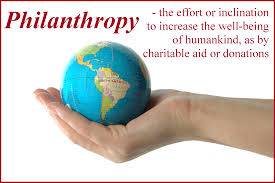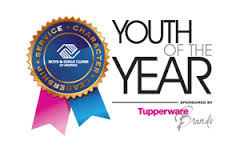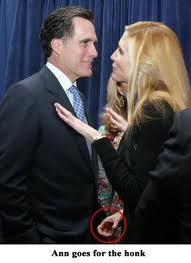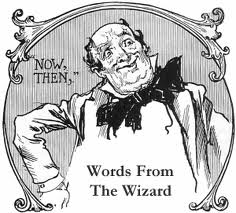 I was on the phone yesterday talking with Pamela Grow over at The Grow Report about a toolbox project I’m currently work on. During that call, she shared an emotional donor story, and my response was simply “philanthropy is emotional“. For whatever reason, I haven’t been able to get neither Pamela’s story nor my simply conclusion out of my head. Whenever something like this happens, I always take it as a sign from the “blogger gods” that I need to write about it.
I was on the phone yesterday talking with Pamela Grow over at The Grow Report about a toolbox project I’m currently work on. During that call, she shared an emotional donor story, and my response was simply “philanthropy is emotional“. For whatever reason, I haven’t been able to get neither Pamela’s story nor my simply conclusion out of my head. Whenever something like this happens, I always take it as a sign from the “blogger gods” that I need to write about it.
So, that’s what you’re getting this morning . . . a handful of stories and examples from my life to prove the point that philanthropy is emotional and ask what you’re doing about it. Hopefully, you can share a few stories and examples of your own.
What exactly is philanthropy?
I know that when I think of “philanthropy” my mind immediately wanders to non-profit organizations and charitable giving. However, the concept of philanthropy is much more expansive than just money being donated to agencies. The following is a simple definition that Google spit out at me when I asked:
“Philanthropy is the desire to promote the welfare of others, expressed especially by the generous donation of money to good causes.“
When you take a step back and look at the bigger picture, “promoting the welfare of others” includes volunteerism, advocacy in addition to charitable giving.
 Our United Way friends totally get an A+ on this one because they’ve been running around for a decade now telling us to LIVE UNITED which encompasses the following ideas:
Our United Way friends totally get an A+ on this one because they’ve been running around for a decade now telling us to LIVE UNITED which encompasses the following ideas:
- Give
- Advocate
- Volunteer
I guess when I step back and look at the bigger picture of philanthropy, I can’t help but wonder how it can’t be an emotional activity. After all, the act of reaching out to help someone else and expecting nothing in return is a selfless activity that is rooted in love and caring. Both of which are emotional. Right?
My first tearful national conference
 My first Boys & Girls Club national conference was in New York City in 2001 literally months before the terror attacks.
My first Boys & Girls Club national conference was in New York City in 2001 literally months before the terror attacks.
During one of the general sessions, the 2001 National Youth of the Year stepped to the big stage and told his story, which included:
- a father who had died
- a mother who was addicted, in prison and infect with HIV
- a Boys & Girls Club that became home
- hope and inspiration
There wasn’t a dry eye in the room.
His story illustrates the power of philanthropy and demonstrates how emotional it is for people.
A donor’s tears
 Fast forward to one of my first engagements as an external consultant. I was assisting with an organizational assessment and conducting interviews with board members, volunteers, collaborative partners, donors, former donors and various other stakeholders.
Fast forward to one of my first engagements as an external consultant. I was assisting with an organizational assessment and conducting interviews with board members, volunteers, collaborative partners, donors, former donors and various other stakeholders.
The organization was experiencing a number of pain points and found itself under scrutiny by the newspaper, television stations, and its supporters. As if this wasn’t bad enough, those who the agency served were starting to organize and protest.
I had the privilege of interviewing someone who had “done it all” including:
- program volunteer
- fundraising volunteer
- board member (I believe two different stints on the board)
- donor
There she sat, sharing her perspective on the current state and desired future state of the agency, and there were lots of tears.
Why was she crying?
Simply said, she understood the importance of the agency. She had witnessed and participated in the transformational gift this organization provides its clients. Her tears were rooted in frustration and fear.
- Frustration that the current issues haunting the agency were getting in the way of fulfilling its mission.
- Fear that the current issues might permanently close the doors and impact clients.
Her story illustrates the power of philanthropy and demonstrates how emotional it is for people.
An executive director’s tears
 I often find myself standing in parking lots after meeting “kicking stones” with staff, board members, volunteers, etc.
I often find myself standing in parking lots after meeting “kicking stones” with staff, board members, volunteers, etc.
After one meeting, there I was in the parking lot with the executive director and their eyes started to pool with tears. It would be simple for me to chalk those tears up to:
- being “sideways” with the board president
- tight cash flow
- inability to expand services
- pressures being brought by partners to build organizational capacity
- powerlessness to be able to give hard-working staff a raise
In reality, this executive director was thinking about opening up a job search and leaving the agency because they weren’t sure that they were the right leader to solve these challenges The stress was eating them up.
The tears stemmed from the fact that they saw program staff, volunteers, and clients as part of their extended family, and the thought of leaving was akin to divorce or death.
Non-profit staff dedicate their lives to promoting the welfare of others. They are usually donors. They typically work for a lot less than what they could earn in the for-profit sector (by choice). They see, touch, hear, and feel “mission” on a daily basis.
This executive director’s story illustrates the power of philanthropy and demonstrates how emotional it is for people.
What are you doing?
Are you on the same page with me now? Do you believe that philanthropy is emotional? If so, then what are you doing to infuse emotion into the following functions at your non-profit agency:
- marketing and PR?
- resource development and fundraising?
- board governance?
- staffing?
- programming?
One of my favorite non-profit PSA commercials is the one featuring Denzel Washington talking from his heart about the roots of his philanthropic spirit. Every time I see this commercial it brings tears to my eyes. Click the video or YouTube link to view this iconic public service announcement and bear witness to another emotional example.
Please take a minute or two to scroll down and share your thoughts and experiences about an emotional philanthropy story. It is the holiday season and a time to give. So, why not give the gift of inspiration to your fellow non-profit colleagues?
Here’s to your health!
Erik Anderson
Founder & President, The Healthy Non-Profit LLC
www.thehealthynonprofit.com
erik@thehealthynonprofit.com
http://twitter.com/#!/eanderson847
http://www.facebook.com/eanderson847
http://www.linkedin.com/in/erikanderson847

 Sometimes I think the universe speaks to us, and lately it has been begging me to write this blog. Over the last few months, I’ve spoken with a good handful of non-profit professionals who have shared stories of scandal and crisis that would make your toes curl. These stories have ranged from incidents on the front line that made the local newspaper to outright embezzlement.
Sometimes I think the universe speaks to us, and lately it has been begging me to write this blog. Over the last few months, I’ve spoken with a good handful of non-profit professionals who have shared stories of scandal and crisis that would make your toes curl. These stories have ranged from incidents on the front line that made the local newspaper to outright embezzlement. For the record, I agree with my United Way friends. If you don’t know about
For the record, I agree with my United Way friends. If you don’t know about  You can probably spend the rest of your life writing policies, but let’s not get carried away. Here are a few questions I suggest you ask as you start going down this road:
You can probably spend the rest of your life writing policies, but let’s not get carried away. Here are a few questions I suggest you ask as you start going down this road:










